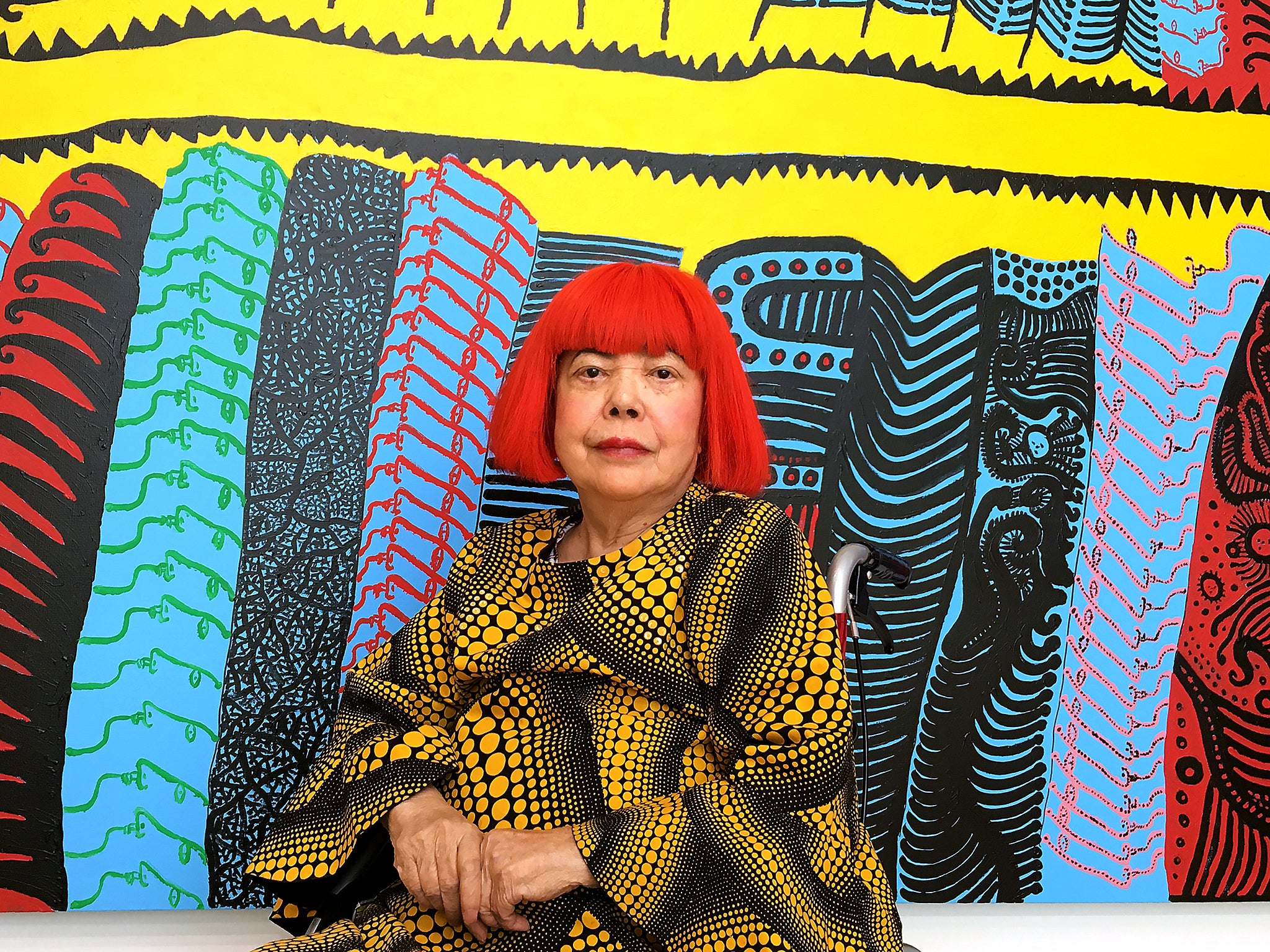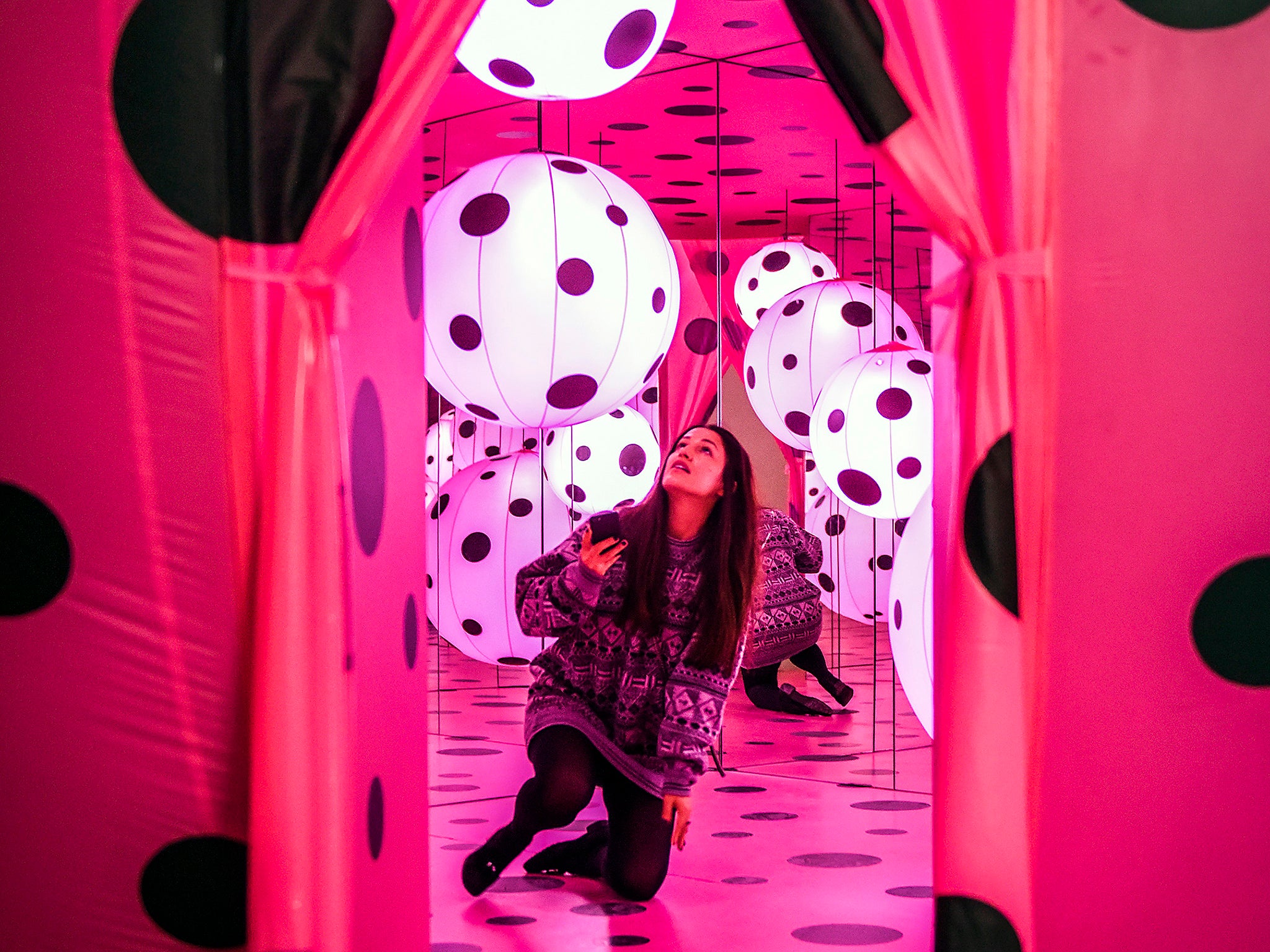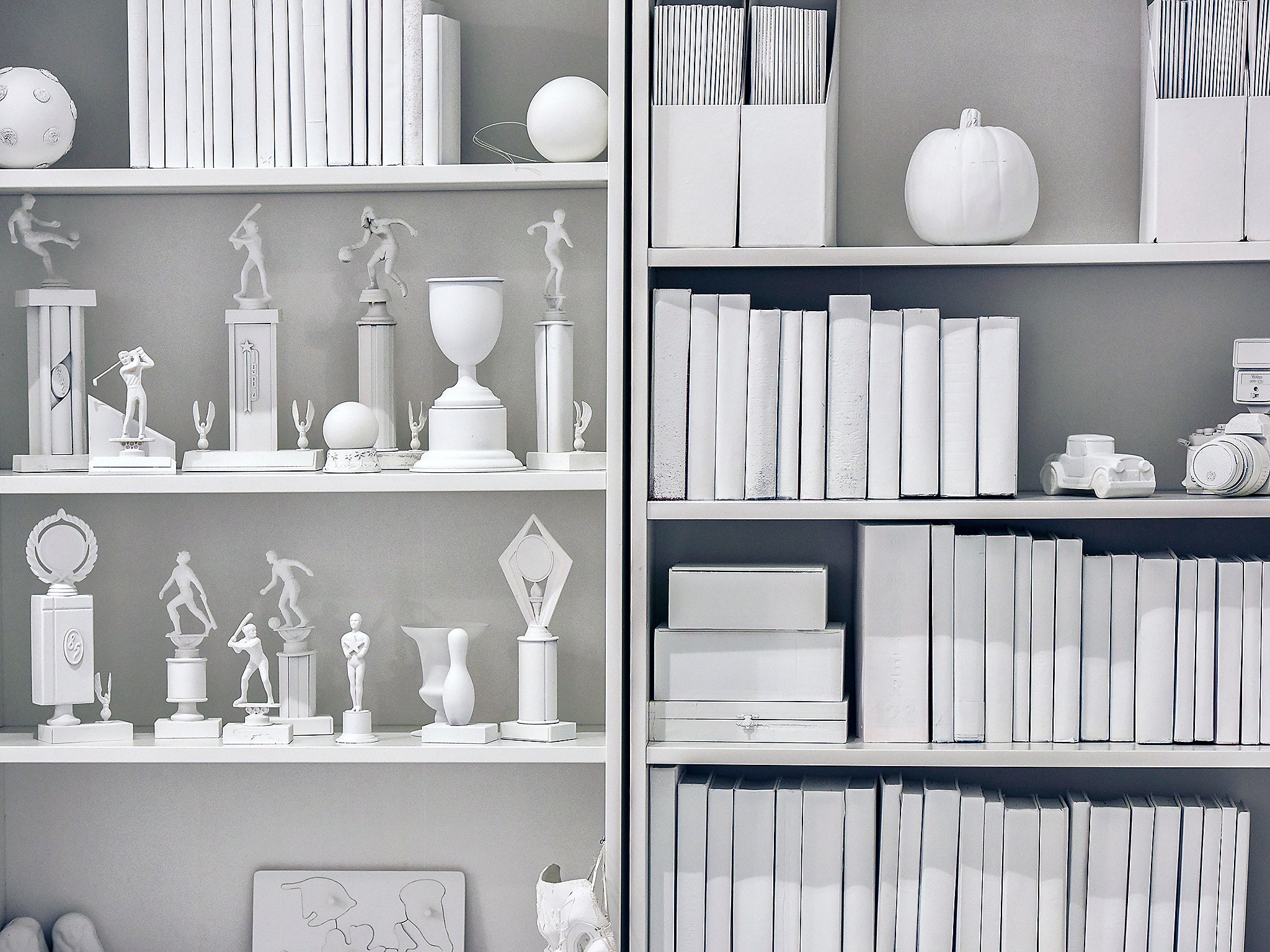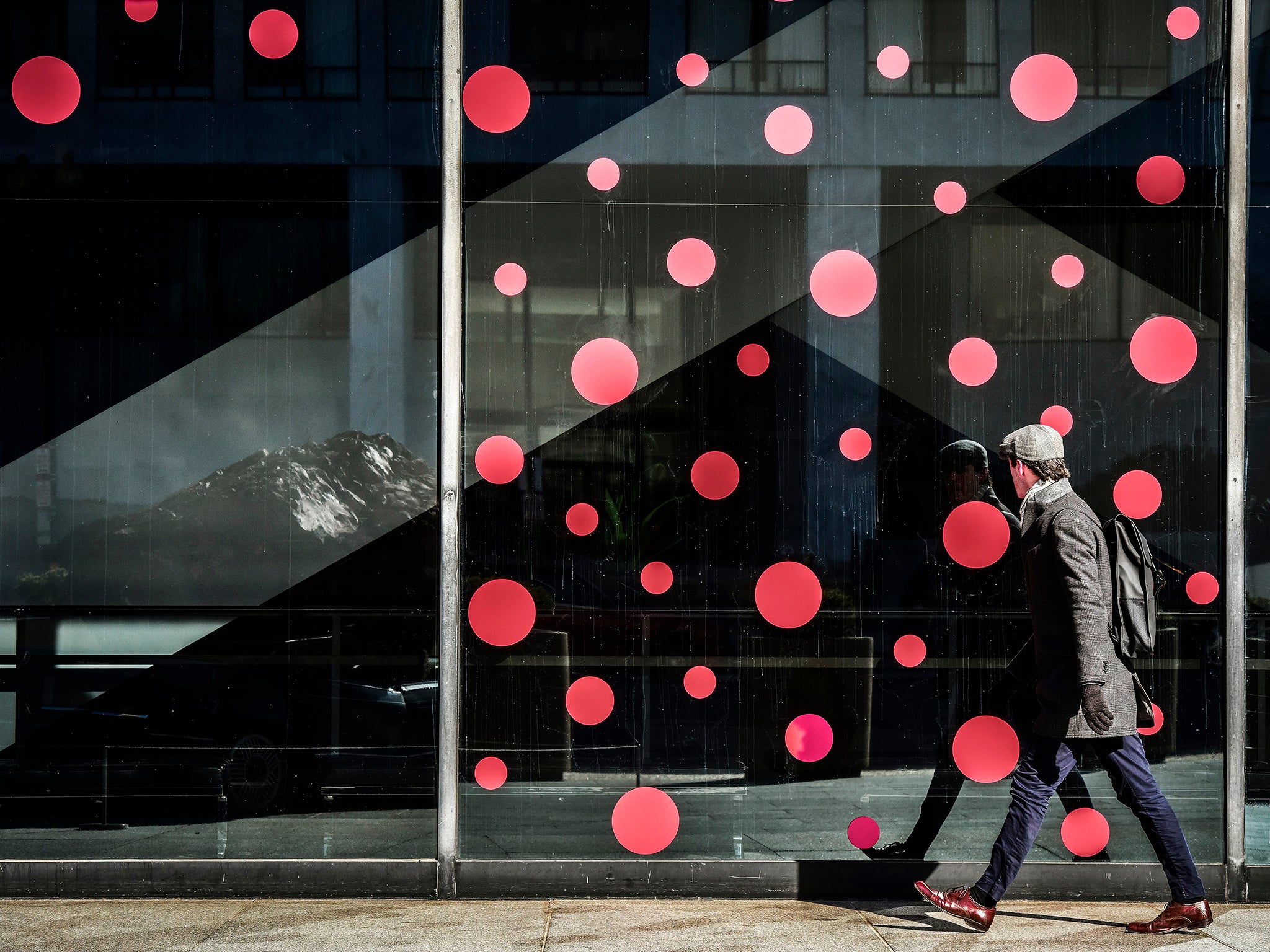At 87, artist and global phenomenon Kusama shows no sign of retiring
She once lived on fish heads scavenged from bins. She was happy to play the Kimono-clad Asian when hanging out with Rothko and Warhol, She even wrote to Nixon to ask him to stop the war in Vietnam. Now artist and global phenomenon Yayoi Kusama is 87 and shows no sign retiring

Your support helps us to tell the story
From reproductive rights to climate change to Big Tech, The Independent is on the ground when the story is developing. Whether it's investigating the financials of Elon Musk's pro-Trump PAC or producing our latest documentary, 'The A Word', which shines a light on the American women fighting for reproductive rights, we know how important it is to parse out the facts from the messaging.
At such a critical moment in US history, we need reporters on the ground. Your donation allows us to keep sending journalists to speak to both sides of the story.
The Independent is trusted by Americans across the entire political spectrum. And unlike many other quality news outlets, we choose not to lock Americans out of our reporting and analysis with paywalls. We believe quality journalism should be available to everyone, paid for by those who can afford it.
Your support makes all the difference.Don’t ask Yayoi Kusama what’s been the highlight of her career. She might be 87 years old, internationally renowned and about to have major, simultaneous exhibitions in the United States and Japan, but she’s not done yet. “It's still coming. I’m going to create it in the future,” says Kusama, often described as Japan’s most successful living artist, at her studio in central Tokyo, paint in her red wig and on her glasses.
Kusama, who has a history of neurosis and has lived as a voluntary resident at a mental hospital a block away for about four decades, has been up at 3am painting, partly because she couldn't sleep and partly because she wanted to squeeze in time for work before the engine of Yayoi Kusama Inc started up for the day. “I’m old now, but I am still going to create more work and better work. More than I have in the past,” she says. “My mind is full of paintings.”
Kusama works in her three-story studio from 9am to 6pm every day, sitting in her wheelchair – she can walk, but is frail – painting on canvases laid on tables or propped on the floor. The studio is packed with new paintings, vibrant works full of tiny dots. They're all about what Kusama calls “self-obliteration” – the endless repetition silencing the noise in her head.
A new gallery across the road is ready to open, and another dedicated museum north of Tokyo is in the works. Plus, she has two major exhibitions in progress. Yayoi Kusama: Infinity Mirrors, a retrospective of her 65-year career, opened at the Hirshhorn Museum in Washington DC on 23 February, running until 14 May. The exhibition features more than 60 of Kusama's paintings, sculptures and installations, along with six of her idiosyncratic “infinity mirror rooms”, featuring balloons, LEDs and polka dots, all endlessly repeated in the mirrors. “She is a pioneer first and foremost, as a female and Asian artist in the Sixties, transgressing painting, sculpture and performance,” says Mika Yoshitake, associate curator at the Hirshhorn. “These mirror rooms are works that reflect her ability to transgress the genres.”

One, a recreation of the mirror room called Phalli's Field from 1965, features hundreds of white-and-red-spotted stuffed fabric penis creations. In another, the Obliteration Room, visitors will be invited to stick multi-coloured polka dots all over a white living room. “These rooms reflect all of her elements: her obsessions, her accumulations, her infinite repetitions. And it's all very bodily and imersive,” Yoshitake says.
The day before this exhibition opened in Washington, another opened at the National Art Centre in Tokyo. Together, the exhibitions underscore the global phenomenon that is Yayoi Kusama. Her polka dots cover everything from Louis Vuitton dresses to buses in her home town. Her artworks regularly fetch a million dollars, and can be found from New York to London and Amsterdam. Her exhibitions are so popular that they need crowd control: the Hirshhorn is giving out timed tickets to try to regulate the stampede.
But Kusama still needs outside validation. “Am I really?” she responds when a reporter asks her about achieving her goal, stated decades before, of becoming rich and famous. “When I was a kid, I had a hard time convincing my mother that I wanted to become an artist. Is it really true that I am famous and successful?”
Kusama was born in Matsumoto, in the mountains of central Japan, in 1929, into a prosperous and conservative family of seedling merchants. But theirs was not a happy home. Her mother had contempt for her womanising father and sent the young Kusama to spy on him. The girl saw her father with other women, sparking what she has described as a lifelong abhorrence of sex.
While still a child, she began experiencing “visual and aural hallucinations”. The first time she saw a pumpkin, she imagined that it was speaking to her. The young Kusama dealt with her hallucinations by drawing, and by drawing repetitive patterns to “obliterate” the thoughts in her head. Even at that young age, art became a form of therapy, what she would later call “art-medicine”.
But Kusama's mother was vehemently opposed to her desire to become an artist, insisting that she follow a traditional path. “She wouldn't let me paint. She wanted me to marry someone," Kusama says, wearing the blank expression of the heavily medicated. “She threw away my artworks. I wanted to throw myself in front of the train. Every day I fought with my mother, and that's why my mental state was damaged.”
In 1948, after the war had ended, Kusama went to Kyoto to study Nihonga, a traditional and highly rule-bound form of Japanese painting. She detested it. Earlier, while living in Matsumoto, she had found a book by Georgia O’Keeffe and was struck by the paintings. So she went to the US embassy in Tokyo and searched the Who's Who reference publication for O’Keeffe's address. She sent her a letter and some paintings and, “astoundingly”, O’Keeffe wrote back. “I couldn’t believe my luck! She had been kind enough to respond to the sudden outburst of a lowly Japanese girl she'd never met or heard of before,” Kusama wrote in her autobiography, Infinity Net.
Despite O’Keeffe’s warnings that the US was a tough place for a young artist – let alone a young, single, female Japanese artist – Kusama wouldn't be dissuaded. In 1957 she managed to get a passport and a visa, and sewed dollars into her dresses to circumvent postwar currency controls. First stop: Seattle, where she held an exhibition at a small gallery. Then she made her way to New York, where she had a rude awakening: “Unlike post-war Matsumoto, New York was in every way a fierce and violent place. I found it all extremely stressful and was soon mired in neurosis,” she wrote.

Making matters worse, she found herself in abject poverty. Her bed was an old door, and she scavenged fish heads and old vegetables from dumpsters and boiled them into soup. But this situation made Kusama throw herself into her work even more. She began producing her first trademark Infinity Net paintings, huge canvases – one was 33ft high – covered with mesmerising waves of small loops that seemed to go on and on. “White nets enveloping the black dots of silent death against a pitch-dark background of nothingness,” is how she describes them. This obsessive-compulsive repetition helped stave off neurosis, but it didn't always work. She repeatedly found herself suffering from psychotic episodes and ended up in a hospital in New York.
Ambitious and driven, and happy to play the role of the kimono-clad exotic Asian, she fell in with an influential artist crowd, hanging out with the likes of Mark Rothko and Andy Warhol (who she later said had imitated her work). She soon found a degree of fame, holding exhibitions in packed galleries. She also found – or rather, courted – notoriety. In the 1960s, when her polka dot obsession was taking off, she began staging “happenings” around New York, enticing people to strip naked in such places as Central Park and the Brooklyn Bridge, then painting their bodies with polka dots. Decades before the Occupy Wall Street movement, Kusama organised a happening in the New York financial district, declaring that she wanted to “obliterate Wall Street men with polka dots”.
Around this time, she also started covering objects – an armchair, a boat, a pushchair – with “phallus-shaped protuberances”. “I began making penises in order to heal my feelings of disgust towards sex,” she wrote, describing how the process “gradually turned the horror into something familiar”.
Kusama never married, although she did have a decade-long relationship of sorts in New York with the artist Joseph Cornell. “I disliked sex and he was impotent, so we suited each other very well,” she once told Art Magazine. But she increasingly became known more for her stunts: she offered to sleep with Richard Nixon if he stopped the Vietnam War: “Let’s paint each other with polka dots,” she wrote to him, and less for her art. This led to a waning interest in her work, and she found herself out of favour and out of money.

News of Kusama's escapades had made it back to Japan, turning her into a “national disgrace” and leading her mother to say she wished that Kusama had died during a childhood illness. Still, in the early 1970s, the broke and failing Kusama returned to Japan. She checked herself into the mental hospital where she still lives and fell into artistic obscurity. Then, in 1989, the Centre for International Contemporary Arts in New York put on a retrospective of her work. This began a revival, if slow, of interest in her art. She filled a mirrored room with pumpkins for the Venice Biennale in 1993, then in 1998 held a major show at the Museum of Modern Art in New York – a venue where she'd once held a “happening”.
Kusama has become a global phenomenon in the past few years. The Tate Modern in London and the Whitney Museum in New York have held major retrospectives, drawing huge crowds, and her signature polka dots are immediately recognisable. Although she has no intention of slowing down artistically, she has started thinking about her mortality. “I don’t know how long I’m going to survive; even after I die there is a future generation that is following in my footsteps," she says, sitting in the bright open space that is her new gallery in central Tokyo. “I would be highly honoured if people would like to look at my work and be moved by my work.”
Despite the commercialisation of her art, she's thinking about her grave in Matsumoto – not in the family plot; she's had enough of them – and how to avoid making it a shrine. “But I'm not dying yet,” she says, striking a more upbeat tone. “I think I can live another 20 years.”
© Washington Post
Join our commenting forum
Join thought-provoking conversations, follow other Independent readers and see their replies
Comments